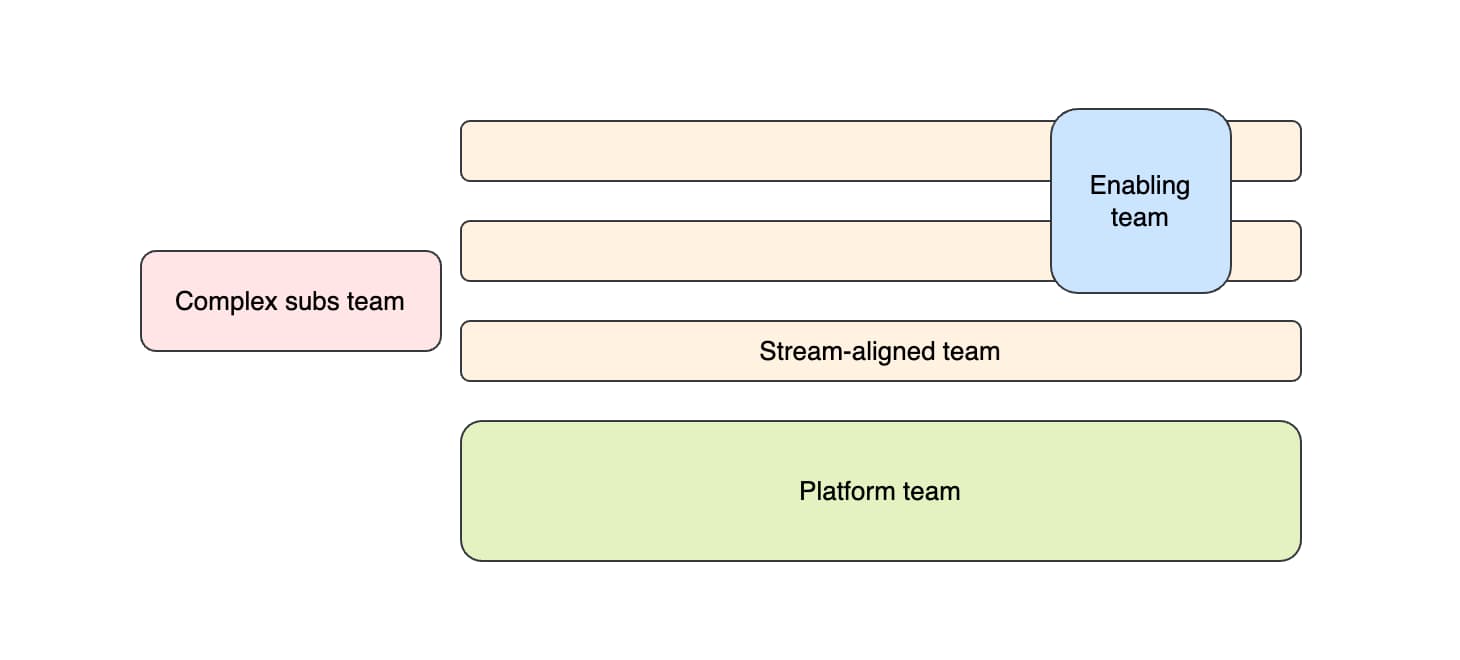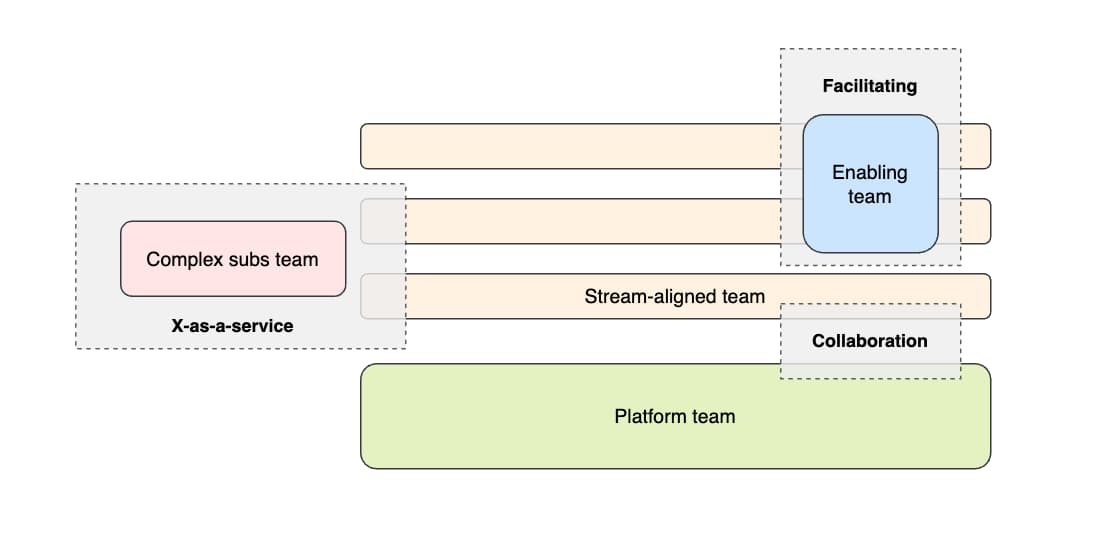In the ever-evolving world of software development, maintaining effective teamwork is paramount to delivering successful projects. As the complexity of software systems continues to grow, so does the need for a well-structured approach to organizing and managing development teams.
Let’s take a closer look at Team Topologies and explore how they can be applied to improve the way your development team operates.

Table of contents
Open Table of contents
The Birth of Team Topologies
To address these challenges and create a more agile and adaptable organization, Matthew Skelton and Manuel Pais introduced the concept of Team Topologies. Their book, ”Team Topologies: Organizing Business and Technology Teams for Fast Flow,” provides a comprehensive guide to this novel approach.
At its core, Team Topologies is a set of patterns and principles for designing and evolving team structures within an organization. It encourages a shift from traditional, function-based teams to teams that are organized around the flow of value and the natural structure of the software architecture.
Four Fundamentals
1. Stream-aligned Teams
These teams are responsible for end-to-end delivery of specific business capabilities or services. They align with the organization’s value streams and are designed to minimize dependencies. Stream-aligned teams focus on delivering value to customers, and they have the autonomy to make decisions regarding their services. They’re often cross-functional, consisting of developers, testers, and other roles needed to deliver the service.
2. Platform Teams
Platform teams provide the tools, infrastructure, and services that enable other teams to deliver their services efficiently. They build and maintain shared resources such as deployment pipelines, databases, and other infrastructure components. The goal of platform teams is to abstract complexity and reduce the cognitive load on stream-aligned teams, allowing them to focus on delivering features.
3. Enabling Teams
These teams support the organization’s technology and delivery practices. They may offer coaching, training, or consulting to help other teams improve their skills and processes. Enabling teams play a crucial role in fostering a culture of continuous improvement and learning within the organization.
4. Complicated-Subsystem Teams
Some organizations deal with complex legacy systems or subsystems that require specialized knowledge and skills. Complicated-subsystem teams focus on maintaining and improving these critical components. They work closely with stream-aligned teams when changes are needed in the subsystems, providing expertise and guidance.
Team Interaction Modes
Team Topologies also defines three interaction modes that guide how teams collaborate:

-
Collaboration: Teams work together closely, often through shared goals or objectives. This mode encourages rapid information flow and problem-solving.
-
X-as-a-Service: Teams provide a service to others, treating them as customers. This mode promotes well-defined interfaces and service-level agreements.
-
Facilitating: Teams act as coaches or advisors, helping other teams improve their processes and skills. This mode focuses on knowledge sharing and mentorship.
Evolving Team Structures
One of the key strengths of Team Topologies is its recognition that team structures are not static. They must evolve as the organization and its software systems grow and change. Teams should continuously assess and adapt their structures to meet the evolving needs of the business.
Benefits of Team Topologies:
Now that we have a basic understanding of Team Topologies, let’s explore the benefits they offer to software development teams:
-
Reduced Cognitive Load: By clearly defining the responsibilities of each team type, Team Topologies reduce the cognitive load on individual team members. Stream-aligned teams can focus on their core services, while platform teams handle infrastructure concerns.
-
Improved Collaboration: Team Topologies encourage collaboration between teams. Stream-aligned teams interact with platform teams to access necessary resources, fostering a culture of cooperation and knowledge sharing.
-
Faster Delivery: The streamlined organization of teams enables faster delivery of software. Dependencies are minimized, and teams can work independently, reducing bottlenecks.
-
Adaptability: Team Topologies are flexible and can evolve as the organization’s needs change. This adaptability ensures that the team structure remains relevant in a dynamic software development landscape.
-
Continuous Learning: Enabling teams play a crucial role in promoting continuous learning and improvement. They help teams adopt best practices, stay current with technology trends, and enhance their skills.
Challenges and Considerations
While Team Topologies offer numerous advantages, implementing them effectively requires careful consideration and effort. Here are some key challenges and considerations:
-
Cultural Shift: Adopting Team Topologies often necessitates a cultural shift within an organization. Teams must be open to change, collaboration, and continuous improvement.
-
Skill Development: Enabling teams are vital for skill development, but they may require specialized expertise. Ensure that these teams have access to resources and training.
-
Monitoring and Feedback: Regularly monitor the performance of your teams and gather feedback. Adjust your topologies as needed to address any issues or bottlenecks.
In the ever-changing landscape of software development, Team Topologies provide a compass to help organizations navigate the jungle of complexity and uncertainty. By rethinking team structures and interactions, embracing adaptability, and aligning teams with value streams and architecture, organizations can enhance their ability to deliver high-quality software efficiently.
Whether you’re a software engineer, team lead, or a product leader, these topologies offer a valuable framework for improving your software development processes and achieving success in today’s competitive technology landscape. Embrace these principles and you’ll find yourself better equipped to thrive in the software development ecosystem.
Team Topologies are a powerful framework for organizing software development teams to optimize speed, agility, and collaboration.
For more detailed information, please check the key concepts by Team Topologies.